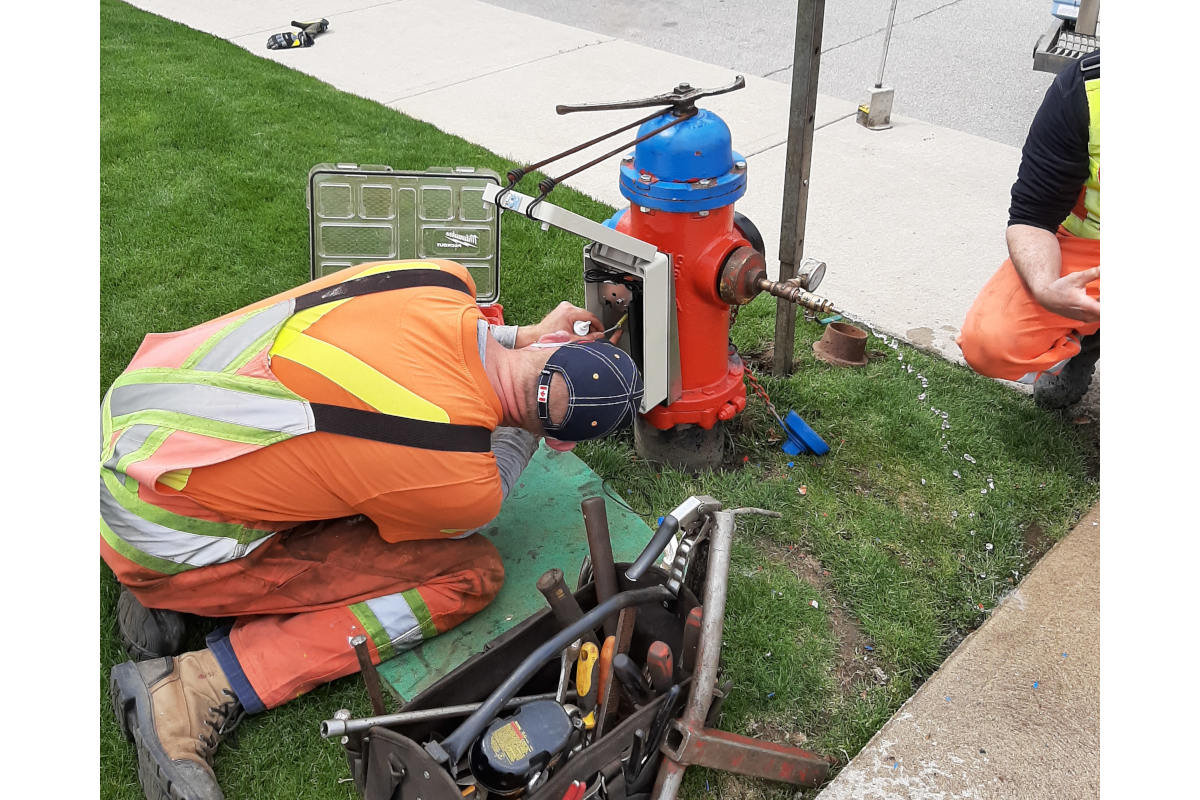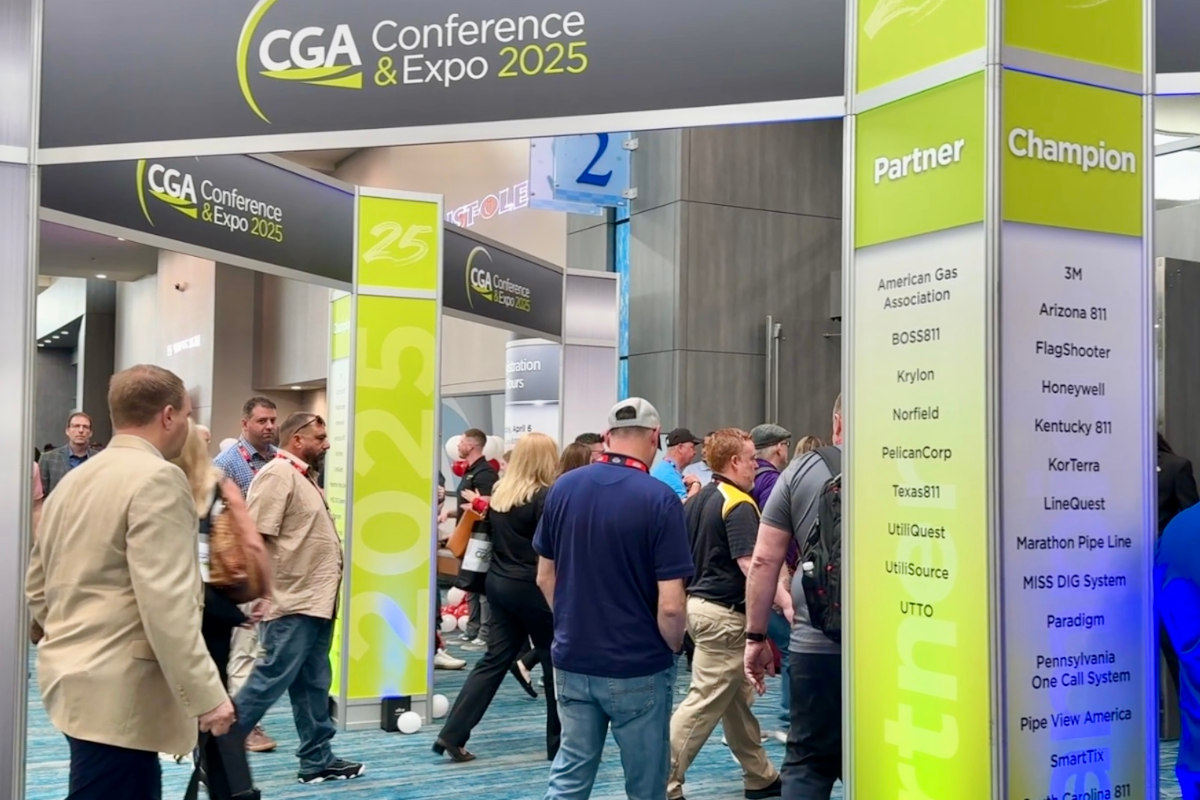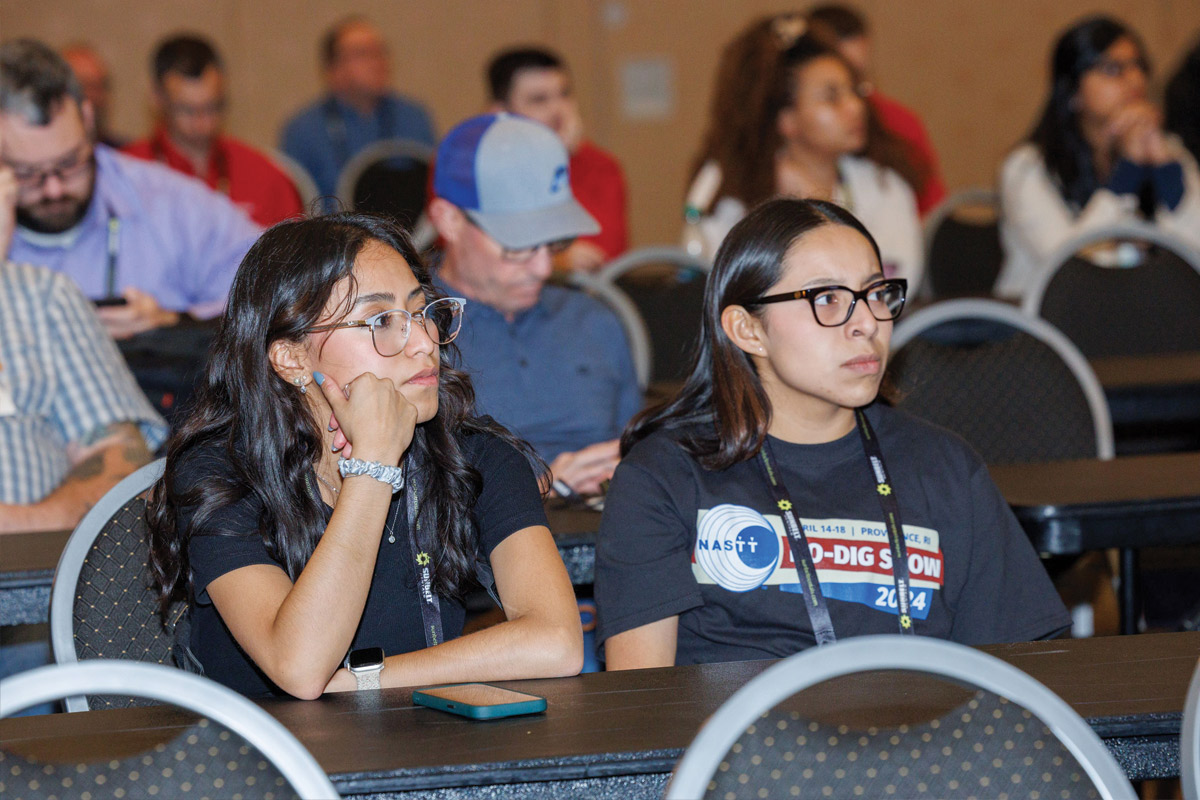
NASTT-GLSLA Trenchless Insights Seminar Focuses on Inspection of Municipal Pipelines
All structures deteriorate over time, and unfortunately, some asset owners have more experience with this than others. However, with challenges, time and engineering also comes innovation.
The 2024 NASTT-GLSLA Chapter’s Trenchless Insights Seminar, held June 19, brought professionals from across the trenchless technology sector together for a deep dive into the latest industry advancements in the field of inspection of municipal pipelines.
Held at the Mississauga Grand Banquet & Event Centre, this year’s event was split up into two sessions covering relevant topics for wastewater/stormwater in the morning, and potable water in the afternoon. The event featured a diverse mix of consultants, owners, contractors and suppliers as presenters and audience members came together to discuss and learn about current and evolving practices, emerging technologies and project case studies.

NASTT-GLSLA Seminar Presentation Topics
Challenges and Innovations in CCTV Inspection of Trunk Sewers, – John Medeiros, Capital Infrastructure Group
Innovations in Confined-Space Inspection Technologies for Sewer, Manhole & Culverts – A Remotely Operated Approach – Joel Batters, Lone Drone Solutions
Sewer Inspection Program Management: Strategies for Reliable Data Collection – Jax Vollmer, GEI Consultants
McMaster University Infrastructure Management Plan – Patrick Moskwa and Noah Resendes, Robinson Consultants
Leveraging Artificial Intelligence & Machine Learning for Aging Infrastructure – James Tustin, Jacobs
Buried Pipelines: Navigating the Complex Web of Inspection Technologies for Optimal Decision Making – Chris Macdonald, CPM Pipelines
Acoustic Fiber Optic for Long -Term Condition Monitoring of Transmission Mains – Nicholas Gan and Heather Jefferson, Region of Peel
Big Pipes, Big Data: Advances in Metallic Pipeline Condition Assessment – Eric Toffin and Angie Wu , Xylem
Leveraging Acoustics to Detect Leaks & Confirm Lead Services – Andrew Bisso and Marwan Daar, Mueller
Increasing the Technical Envelope of Desktop Assessments for Water Distribution Networks with AI and Other Advanced Analytical Techniques – Chris Macey, AECOM

Showcasing Innovation
Batters demonstrated how advanced instrumentation, robotics, and drones can minimize risk while also optimize time and budget. Wastewater/stormwater assets, such as sewers, are naturally a confined space, water and toxic waste hazard. Once you couple those hazards with deteriorating infrastructure, there are real health and safety risks at play when entering a sewer to do any inspection or other work. Therefore, using robotics in inspection is naturally the preferred alternative to humans as the loss of an instrument can be a managed risk while the loss of life or injury is un-acceptable.
Batter’s team at Lone Drone Solutions discussed what could be the next innovation in condition assessment of sewer assets. Conventional CCTV inspection uses remotely operated vehicles (ROV) equipped with wheels, a camera and a light, whereas Lone Drone Solutions hosts an array of ariel, terrestrial and marine remotely operated devices that operate hi-lumen lighting, hi-resolution cameras and LiDAR scanning that can generate 3D models with photogrammetry.
The company team could also be improving the rate at which inspection and condition assessment can be undertaken and the conditions it can be taken in. Having a unique set robots propelled by other movements like walking or flight compared to the traditional wheel type will allow for asset owners to inspect hard to reach places where debris may obstruct the line of travel.
Could this be the end of our incomplete CCTV inspections due to blockage from debris?

Innovation in Action
During the afternoon session, Gan and Jefferson demonstrated how the Region of Peel is applying state-of-the-art acoustic fiber optic sensing technology to monitor the health of critical water transmission main infrastructure. The application of fiber optic sensing utilizes the science of lasers, glass fibres and interferometry to make highly sensitive measurements down to the micro-strain level.
To leverage this technology for inspection and asset management, fiber optic cables are strung through the transmission main, connected to a data acquisition unit, and together the system “listens” for when and where wire breaks occur. With this system, the Region of Peel is proactively continuously monitoring their critical water assets to strategically plan repairs and replacements without acting too early or, even worse, too late.
Are We Too Late?
Two weeks before the seminar, a disaster was in the news affecting the City of Calgary. A critical transmission main burst, leading to a city-wide disruption, the ripple effects of which are still being felt. The watermain break resulted in a massive leak, water shortages, low water pressure and boil water advisories for citizens.
Initially, mobilizing a repair could have taken an indeterminate amount of time, as materials for a 2-m diameter pipe repair don’t simply come off the shelf at the hardware store. Thankfully, Calgary’s team had a direct connection to the San Diego County Water Authority, which had two sections of pipe that fit the bill. San Diego shipped them north enabling the emergency repair to be complete and water service was restored about a month later.
Although the watermain was only in year 49, of 100 of its design life, this event underscores the importance of innovation in infrastructure health monitoring to help prevent such occurrences in the future.
Valuable Insight
The 2024 NASTT-GLSLA Trenchless Insights Seminar demonstrated the latest advancements in the inspection of municipal pipeline infrastructure and highlighted how engineering is addressing the challenges posed by aging infrastructure to ensure the reliability and safety of essential water and wastewater systems.
The recent incident in Calgary served as a stark reminder of the consequences of infrastructure failures and the urgent need for continuous monitoring and proactive maintenance. By leveraging these emerging technologies, municipalities can better manage their assets, prevent catastrophic failures, and ensure a sustainable future for their communities.
Robert Cichocki, PhD, is Municipal Engineering Specialist, Water, at AECOM.




